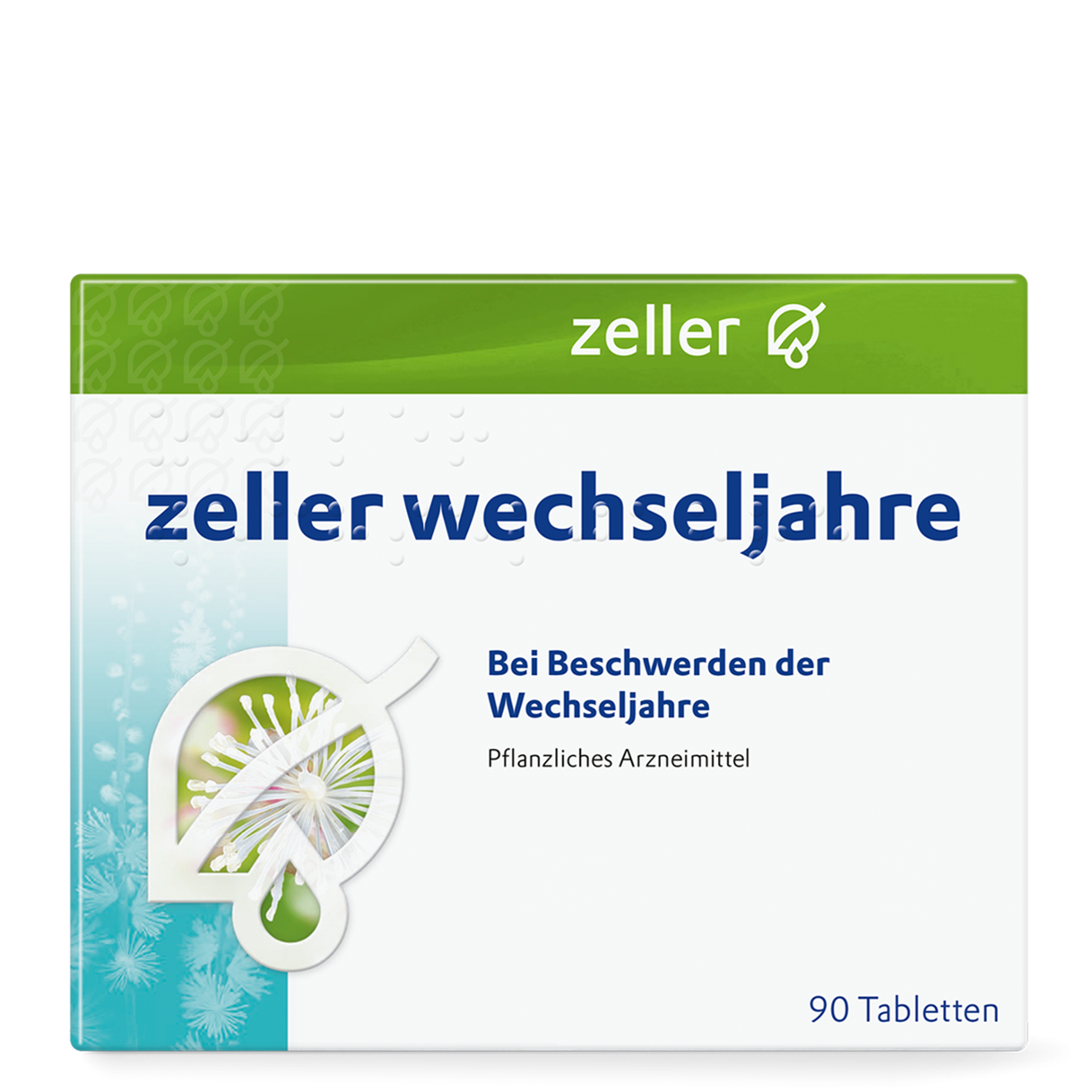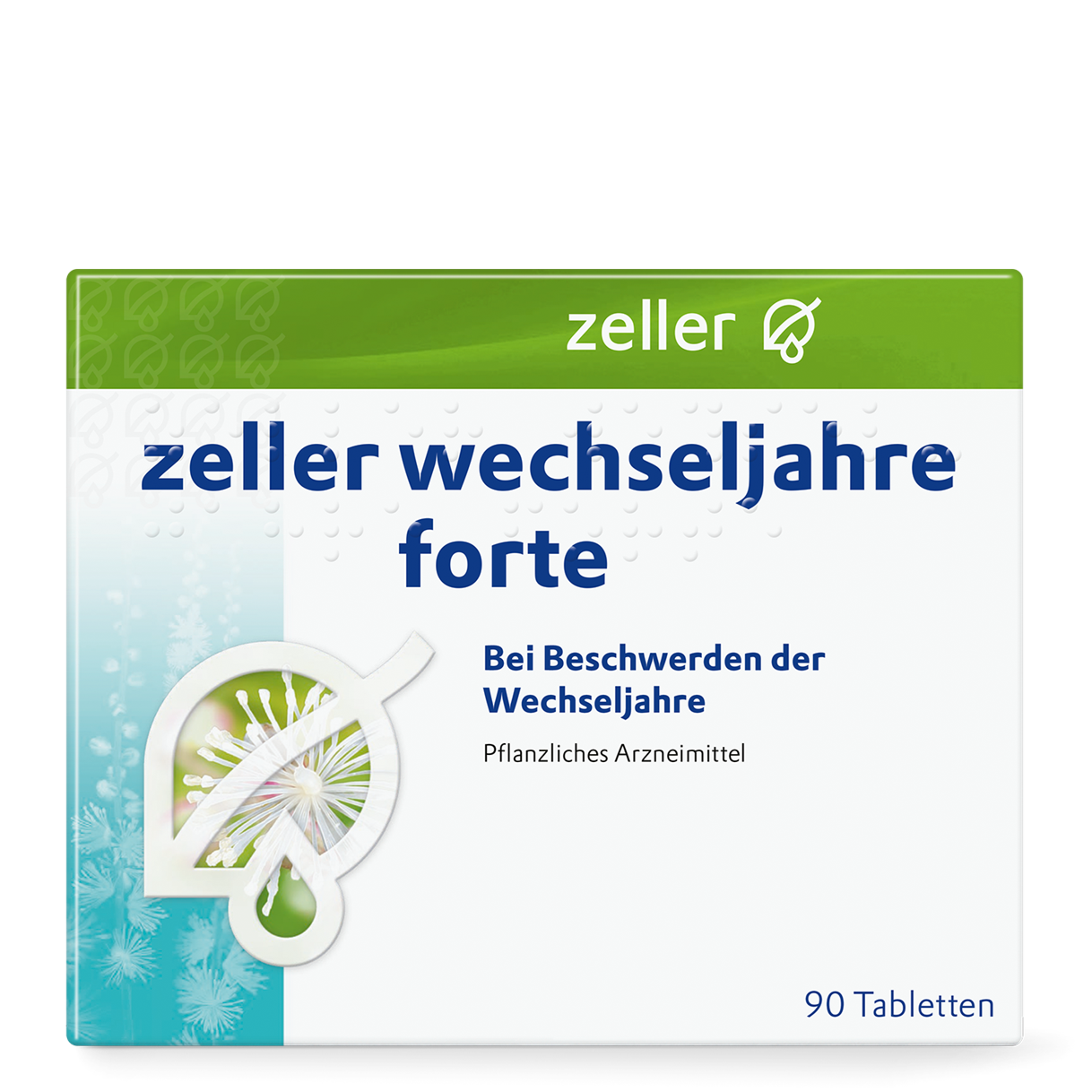
Menopause and problems during menopause
During menopause, the female hormonal balance undergoes a change whereby the production of progesterone and oestrogen drop considerably. A good two-thirds of women experience menopausal symptoms during this transition.
In many cases these symptoms can be treated with natural remedies.
What is menopause?
Menopause is a transitional phase. During these years, a woman undergoes a transition to the infertile stage, marking a major turning point in her life. The medical term “climacteric”, which derives from the Latin term for “critical epoch”, is also used when talking about menopause. Menopause is triggered by the decreasing production of the hormones progesterone and oestrogen. The changes in the hormone balance are accompanied by a range of symptoms in around two-thirds of women, whereas the remaining third experience virtually no changes.
What happens during the menopause?
Menopause marks the end of a woman’s reproductive years. The reproductive years begin during puberty with the onset of the menstrual cycle and end when a woman menstruates for the last time. This end of menstruation is referred to as menopause (Greek men: month, pausis: end) and occurs on average at the age of 52. It is possible to determine that it has occurred if, for example, it has been about 12 months since a woman has had her period.
The hormones oestrogen and progesterone play a key role in the menstrual cycle. Oestrogen stimulates the formation of new uterine lining after the old lining has been shed during a woman’s previous period. Levels peak shortly before ovulation. After a woman ovulates, her body produces progesterone, which helps the egg to attach to the uterus in the event of fertilization. If fertilization does not occur, progesterone levels drop and the uterine lining is shed again at the beginning of the next cycle.
During menopause, the egg cells start to mature irregularly until the ovaries stop producing them altogether. With the onset of menopause, there is also a considerable drop in progesterone levels. Likewise, oestrogen levels drop after a woman menstruates for the last time. Menopause can be divided into three phases with fluid transitions.
Pre-menopause
During pre-menopause, progesterone levels begin to drop. As a result, a woman’s menstrual cycles change as well, becoming more irregular or stopping altogether.
Perimenopause
Perimenopause refers to the phase two years before and after a woman’s very last period. This phase is characterised by a drop in production in the ovaries. Ovulation occurs less frequently until it eventually stops altogether. Progesterone levels drop steadily. After a woman menstruates for the last time, oestrogen levels drop significantly as well.
Post-menopause
During post-menopause, hormone production continues to drop until stopping completely at around the age of 65.
What symptoms occur during menopause?
There is a range of more or less common symptoms that occur during menopause. All of them fall under the rubric of climacteric symptoms which vary in severity and type. The symptoms can be categorised in different menopausal phases. Here, too, the boundaries are fluid.
Who is affected by menopausal symptoms?
On average, two-thirds of women suffer from menopausal symptoms. These are most intense during perimenopause and go away during post-menopause. Perimenopause begins around two years before and ends two years after menopause. Menopause usually occurs between the ages of 45 and 55 – on average at 52. The term “early menopause” is used when it occurs between the ages of 40 and 50. Menopause is considered premature when it occurs between the ages of 35 and 40. Smoking and being underweight increase the likelihood of this, whereas regular alcohol consumption can delay a woman’s final menstruation.
How are menopausal symptoms treated?
Today there are a variety of possible ways to treat menopausal symptoms.
In addition to hormone replacement therapy (HRT), there are herbal alternatives, such as black cohosh, red clover and soya. Monk’s pepper can be taken in early menopause when a woman may experience irregularities in her cycle.
Tips for menopause
Hormonal changes are a normal part of the natural aging process and cannot be avoided. There are various ways to prevent or reduce the effects, however. These mainly involve taking into consideration what your body needs.
A diet rich in vitamin D and calcium improves a person’s overall well-being and reduces the likelihood of osteoporosis. If you experience hot flushes, you should also avoid hot and spicy foods.
Drinking two to three litres of fluid daily helps to keep the skin from drying out. You should also apply creams especially suited to your needs.
Exercise stimulates the formation of new bone mass and has a positive effect on the bones. In addition, it also burns more energy to counteract weight gain.
Relaxation exercises such as yoga, breathing therapy and the Jacobsen muscle relaxation technique can help boost energy levels. Potentially stressful situations should also be avoided whenever possible to help minimise the risk of sleep disorders or greater irritability, among other things.
Taking walks in the fresh air and in pleasant surroundings is an easy way to complement a healthy lifestyle – and lift your spirits and boost the immune system.
Self-test: Menopause
Find out how strongly you are currently affected by menopausal symptoms.
START NOWSelf-test: Menopause
Find out how strongly you are currently affected by menopausal symptoms.
START NOW



